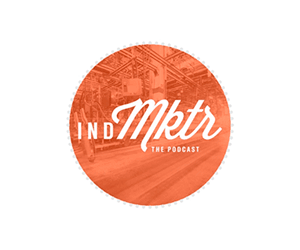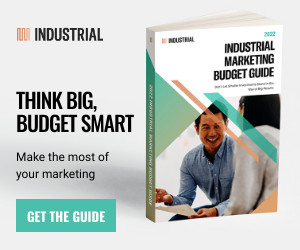Trends come and go quickly in marketing, but one truism holds: Email is king in B2B marketing. No other tactic comes close to combining the power of distribution, engagement and prospect information gathering. That’s why it’s important to have a handle on email best practices when it comes to manufacturing marketing.
Before we dive in, here are a few interesting stats about B2B email marketing:
- Email is the third most influential source of information for B2B audiences, behind only colleague recommendations and industry-specific thought leaders.
- 86% of business professionals prefer to use email when communicating for business purposes.
- Clickthrough rates are 47% higher for B2B email campaigns than B2C email campaigns.
- 59% of B2B marketers say email is their most effective channel in terms of revenue generation.
And without further ado, here are five sure-fire email best practices to follow to ensure success with your email marketing for manufacturing.
1. Offer Value
Email marketing offers opportunities to distribute the entire range of your content. It might be through a regular email newsletter or a campaign. Offering value through content on a regular basis will build a following and raise your company profile, which helps keep your brand top of mind for customers and prospects.
Examples of providing value include:
- Education – You can utilize subject matter experts (SMEs) at your manufacturing company to educate your audience about aspects of your products or services. You can provide thought leadership on regulatory issues or market forces.
- News – Email is a great way to share relevant headlines with your audience, which also can add to your credibility as a trusted industry leader. There is value in sharing what you find of value.
- Tips – This is obviously specific to your manufacturing niche, but don’t underestimate how much people appreciate a good tip related to hiring practices, career development, or useful how-tos.
- Helpful information – People appreciate information about market trends and updates, as well as reminders about events and conferences.
2. Have the Right Tools
Email best practices dictate that your email marketing efforts be connected through an integrated tool stack. In many cases, this can be an email service provider (ESP) or marketing automation tool, but it is imperative that you are able to monitor and understand the impact your emails are having. In order to keep a consistent email program running, there are a few things to attend to:
- Automation – Using a tool like HubSpot, Marketo, or ActiveCampaign can allow for email sequences and appropriate touch points to be sent without the need for sales or marketing personnel to spend time away from their normal routines. Things like contact form follow-up emails, sales brochure deliveries, website activity notifications, deal stages and more can be automated with the right systems in place.
- Design – Any proper email marketing management system will have the ability to send designed HTML emails that look and feel like they properly represent of your company. While many sales-based email conversations can be managed through standard text-based email providers, marketing email best practices favor designed emails for engaging leads.
- Schedule – The right time to send an email will differ for every industry and even across job titles. Having an email management system or marketing automation tool in place will allow for your team segment your email database and test different sending times to identify the most effective distribution periods for each audience and, in some cases, users.
3. Personalize the Experience
With the right tools, you can automate personalization to acknowledge someone’s birthday or to follow up on someone’s most recent visit to your website. Even if you do not truly personalize emails, you can smartly segment them any number of ways, such as:
- Location – You can send different messages to different parts of the country or world.
- Personas – The messages for people in finance departments, buyers and CFOs will undoubtedly be different from what you communicate to engineers, plant managers and environmental, health and safety officers.
- Customer types – You can customize messages based on what type of products someone has bought or different places in the customer lifecycle.
- Dormancy – You can deliver a message specific to inactive leads or former customers, perhaps offering them an incentive to re-engage.
4. Experiment
Email best practices aren’t inflexible. Quite the contrary as email provides endless opportunities to experiment, especially if you have access to A/B variant testing. If so, try two versions of the subject line to see which works better.
You can vary some approaches from week to week, such as sending emails at different times of the day or on different days. You also can experiment with images and even emojis.
Pay attention to open rates and clickthrough rates with your experimentation, but also pay attention to opt-out rates. You are gathering data, so learn as much as possible from it.
5. Measure
Email marketing is a key component of inbound marketing, which can help you learn not only where your leads come from, but also where your best leads come from, how many convert into customers, and how long that process might take. The true power of analytics is turning data into actionable insights.
Email marketing can help you establish an analytics foundation. You can begin with these basic metrics to track and learn from:
- Open rate – Simply how many recipients open the email to look at it.
- Clickthrough rate –This counts how many recipients click through to your website, products or offers. This is a key B2B metric.
- Conversion rate – This is the success rate for your call to action — whatever the goal of the email was. It might have been a product offer, downloading a white paper, or watching a video.
Listen to the Podcast for More on Email Best Practices
For more insights into email best practices for manufacturing marketing, tune into Episode 14 of the Industrial Marketer podcast.
Be Sure to Subscribe to the Industrial Marketer Podcast
The Industrial Marketer podcast comes out twice a month. To subscribe, visit our Buzzsprout show page and select your podcast platform of choice.
And if yAnd if you have any ideas for topics you’d like us to cover on the podcast — or here on the Industrial Marketer website — send us a message on Facebook or Twitter and let us know!




